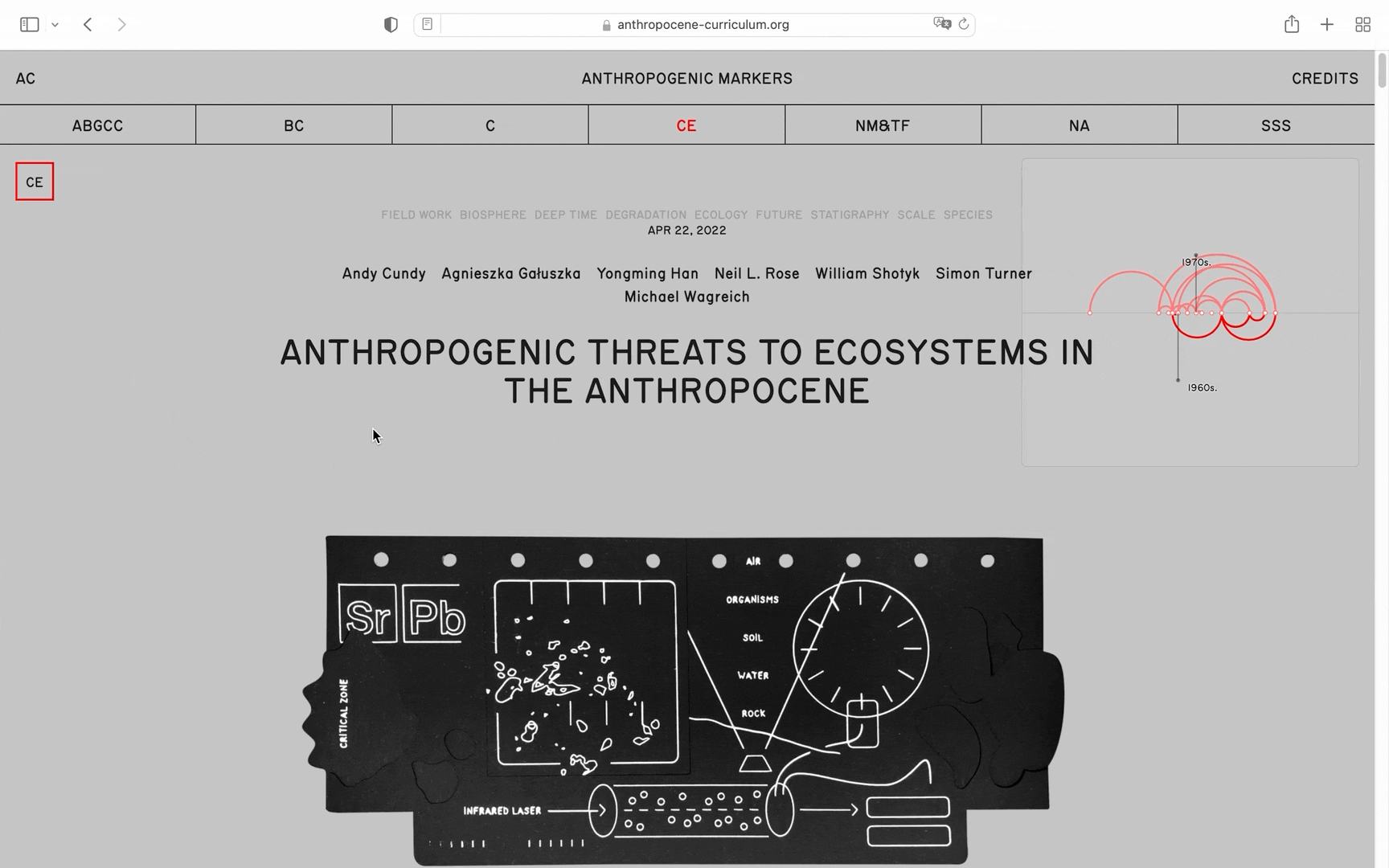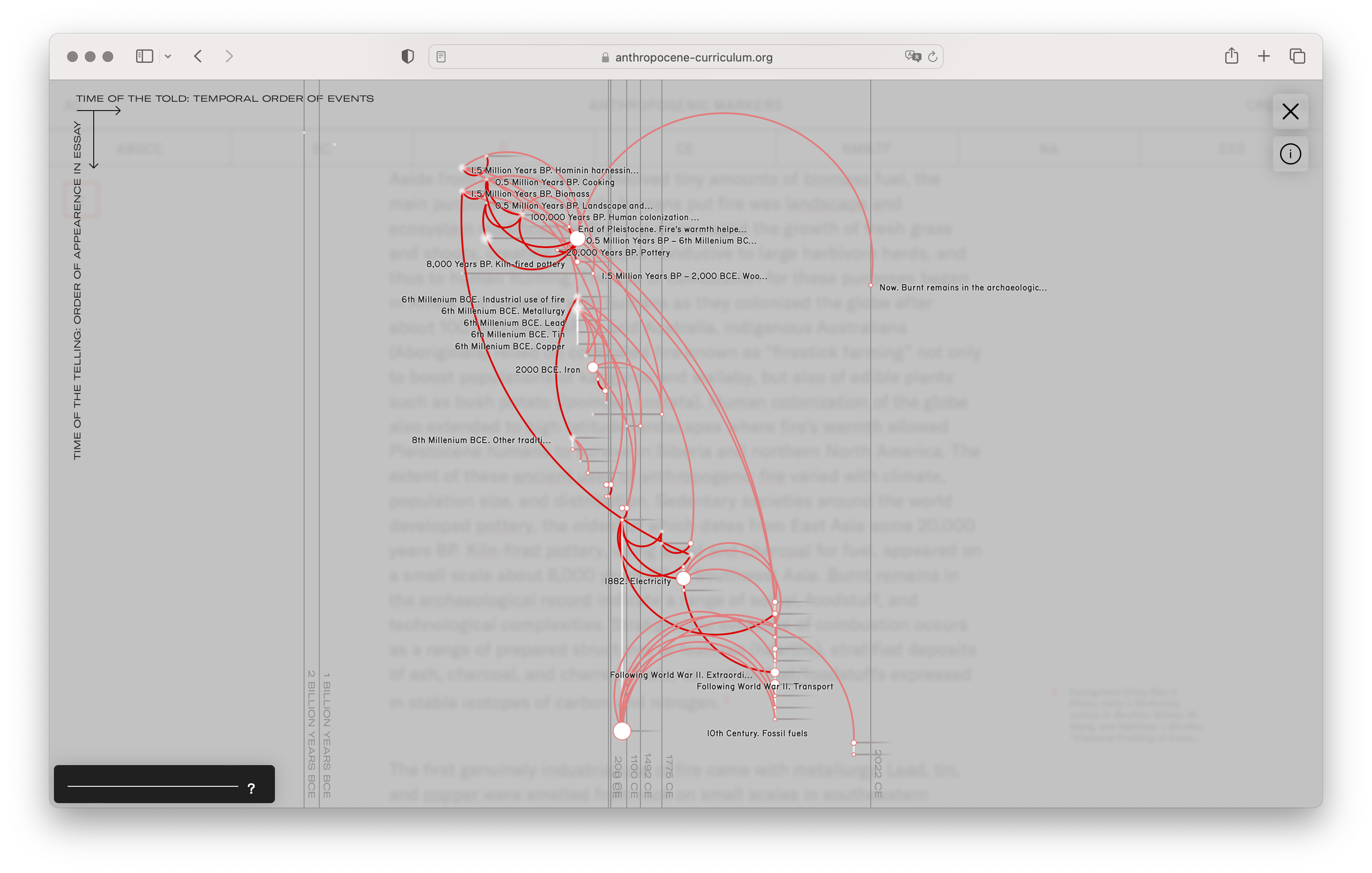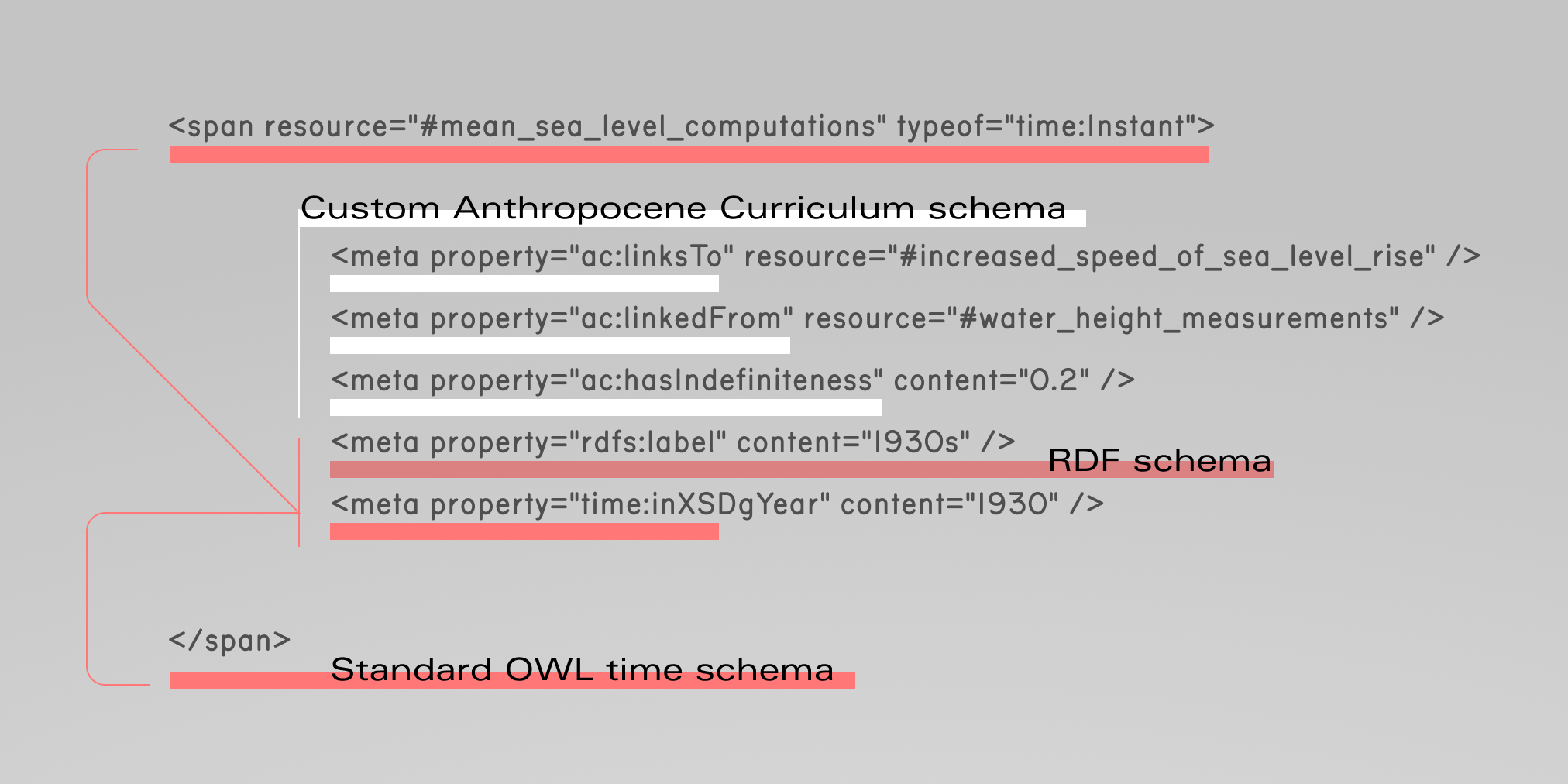Data Mapping of the Anthropocene Curriculum
This generative visualization complements seven thematic dossiers part of the Anthropocene Curriculum. These visualizations are meant as a navigational interface to support readers’ exploration of the essay.
Link:
Team and partners:
Jonas Rinderlin,
Nathaniel La Celle-Peterson,
Marian Dörk,
Alan Woo,
Christoph Rosol,
Dirk Wintergrün
Year:
2022
The special publication Anthropogenic Markers: Stratigraphy and Context explores and contours some of the historical contexts, epistemic settings, and conceptual interventions around the ongoing work of Anthropocene geology. In seven thematic dossiers, contributions from the fields of geochemistry and paleobiology, history and science studies, artistic research, archaeology, literary studies, and anthropology reflect on selected material markers of human impacts on earthly strata. Taken together, they form a unique interdisciplinary conversation across positions and perspectives, helping to map out and expand upon the many ways of tracing the evidence that defines the onset of a human-dominated and crisis-laden epoch.



Manaul revision and tagging of the essays
The opening essay of each dossier is complemented by interactive visualizations displaying its key temporal events. These visualizations are meant as a navigational interface that supports and encourage readers’ in-depth exploration of the essay. Events are mapped according to their temporal distribution and position in text, then plotted. The time axis itself adapts in order to fit hundred thousands of years on the screen. The causal relations among events are represented by arcs, spanning across the visualization. As the reader scrolls by, events are highlighted, accompanying the natural reading flow. Essays have been manually revised and tagged using a HTML syntax built on top of the W3C’s OWL time anthology [https://www.w3.org/TR/2020/CR-owl-time-20200326] and custom identifiers for temporal events’ causality. The meta-data is then fetched and used to create the visualizations.
